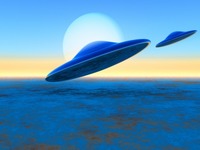
NASA CASSINI MISSION SENDS BACK PIX FROM SATURN'S MANY MOONS
Let's take a tour of some of the many moons of Saturn, courtesy of NASA's Cassini Mission. Some of the photos have been around for a couple months, while others are "hot off the press".
Included in this virtual tour of Saturn's Moons are Janus, Rhea, Hyperion, Dione, Penelope, Titan and Enceladus. There are many more, but these are some of the most noteworthy of Saturn satellites.
First, a little bit of background on the moons themselves. From Moons of Saturn:
The moons of Saturn are numerous and diverse, ranging from tiny moonlets to the enormous Titan. Saturn has 61 moons with confirmed orbits, 53 of which have names, and most of which are quite small.
There are also hundreds of known moonlets embedded within Saturn's rings. With seven moons that are large enough to have sufficient gravitational attraction to become spherical in shape (and which would thus be considered dwarf planets if they were in direct orbit about the Sun) in addition to the planet's broad and dense rings, the Saturnian system is the most diverse in the solar system.
Particularly notable are Titan, the second largest moon in the Solar System, with an earth-like atmosphere and a landscape including hydrocarbon lakes and river networks, and Enceladus, which may harbor liquid water under its south pole.
NOW, on with the tour.
JANUS

The Cassini spacecraft looks toward the south pole and cratered surface of Saturn's moon Janus.
The pole of Janus lies on the terminator about one-third of the way inward from the bottom of the image. This view is centered on terrain at 42 degrees south latitude, 32 degrees west longitude. Lit terrain seen here is on the Saturn-facing side of Janus (179 kilometers, or 111 miles across).
MORE: Janus' Cratered South
RHEA

Bright sunlight on Rhea shows off the cratered surface of Saturn's second largest moon.
See Ancient Plains of Rhea and Bright Rays to learn more about this moon.
Lit terrain seen here is on the Saturn-facing side of Rhea. North on Rhea (1,528 kilometers, or 949 miles across) is up.
MORE: Reflecting on Icy Rhea
HYPERION

The Cassini spacecraft peers at the pitted surface of the small and irregularly-shaped moon Hyperion.
See Chiseled Away to learn how these pits are created on low-density Hyperion (270 kilometers, or 168 miles across). To watch a movie of this tumbling moon, see Rough and Tumble Hyperion.
MORE: Pitted Hyperion
PENELOPE

The Cassini spacecraft spies the large Penelope crater on Saturn's moon Tethys.
Penelope crater lies near the center of the image. See Odysseus and Penelope to learn more about the prominent features on Tethys. This view looks toward the trailing hemisphere of Tethys (1,062 kilometers, or 660 miles across). North on Tethys is up.
MORE: Spotlight on Penelope
TITAN

In the top right of this Cassini image, the southern end of Titan's huge lake of liquid hydrocarbons called Kraken Mare is visible near the moon's north pole.
See Maps of Titan - January 2009 to learn more about Titan's lake districts and to see a map. Near the moon's equator are the albedo features Senkyo on the right and Aztlan on the left. This view looks toward the Saturn-facing side of Titan (5,150 kilometers, or 3,200 miles across). North on Titan is up and rotated 31 degrees to the right.
MORE: Titan's Northern Lake
ENCELADUS

This unprocessed image was captured by NASA's Cassini spacecraft during its Nov. 21, 2009 flyby of Saturn's moon Enceladus. It shows the ridges and fractures on the surface of the icy moon.
MORE: Enceladus Flyby E-8 (Image 2)
DIONE

Craters dot Dione's high northern latitudes, and, farther south, wispy fractures stretch across the moon's equator and mid-latitudes.
To learn more about Dione's wisps, see Scratches on Dione.
TITAN

One last look at Titan.
This Cassini spacecraft image affords a view of Titan's south polar region, an area home to one of Titan's hydrocarbon ''lake districts.''
Titan's south pole is illuminated to the right of the terminator near the bottom of the visible disk. The dark area near the bottom, in Titan's mid-southern latitudes, is Mezzoramia. The wider, darker region near the equator is named Senkyo. A "lake district" (see Changes in Titan's Lakes) containing what scientists believe are lakes of hydrocarbons has been found surrounding Titan's south pole.
MORE: Titan's Murky South Pole
See all 20+ pages of photos at NASA's Cassini Equinox Mission. If you're a space pix fan, be prepared to spend some time at the site.
POSTED at DBKP as "Saturn's Moons: Take a Virtual Tour of Seven Saturn Moons".
by Mondo Frazier
1st image: Saturn family
src="http://d.yimg.com/ds/badge2.js"
badgetype="small-votes">
ARTICLEURL































Hey Everybody,
ReplyDeleteBelow are the most recommended BITCOIN exchange services (Bitcoin for Currency):
Coinbase: $1 minimum trade
CoinMama
Earn free bitcoins with the best Bitcoin faucet rotator:
BEST Faucet Rotator